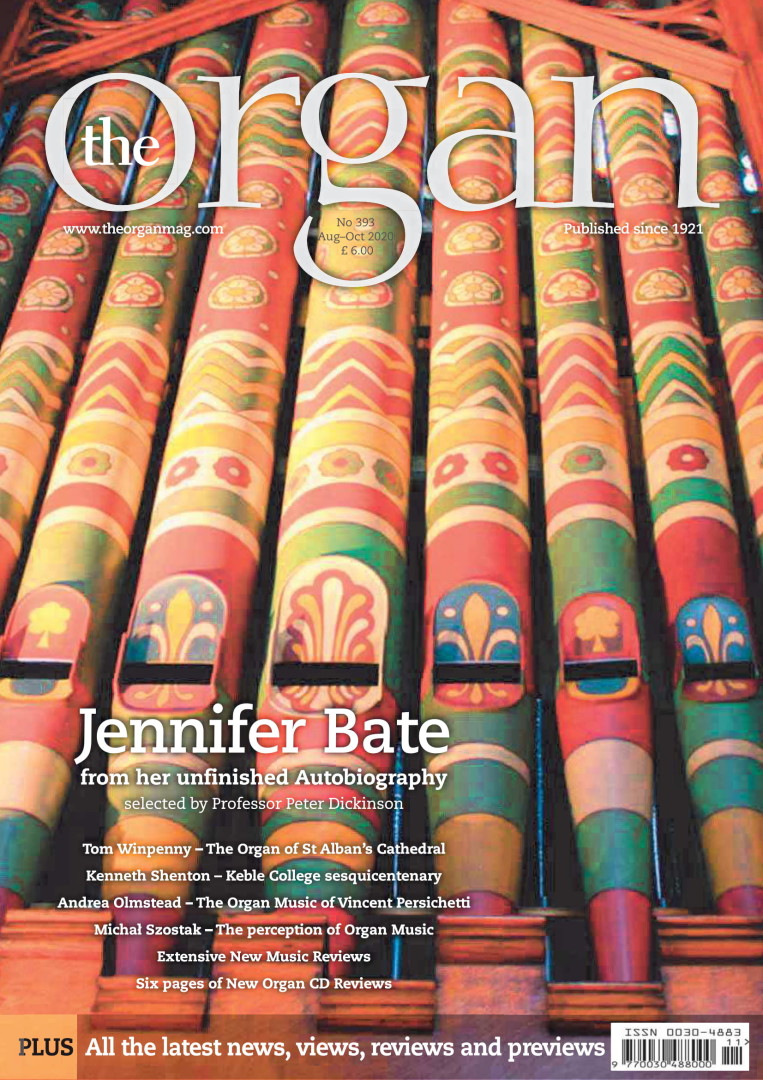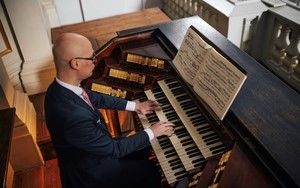New article (ENG): "The Perception of Organ Music”, in: "The Organ”, No 393, August-October 2020
Dodano 12.8.2020

"The Perception of Organ Music”,
in: "The Organ”, No 393, August-October 2020, Musical Opinion Ltd, London, ISSN 0030-4883, pp. 8-13.
Abstract: Analysis and detailed understanding of the artwork receiving process, both by the creator (performer, improviser, composer) and by the receiver.
My considerations to date in terms of the aesthetics of organ music concerned mainly the perspective of the musician, who – when being fluent in his field of art – can be called an artist[1]. In this article I will focus on the second but no less important subject of the aesthetic situation, i.e. the recipient. It is the recipient who is the addressee of a work of art created during the creative process and received in the perception process[2]. It is in the process of perception – i.e. receiving, learning about the work, experiencing its value, understanding it, accepting or rejecting it – that the aesthetic object and the personality of the recipient are shaped[3].
Organ music and its recipients constitute a unique category of music. If we mean an organ recital, then this uniqueness will be slightly smaller; however, if we mean liturgical organ music, then the issue of perception of this music takes on new contexts, becoming unique and requiring special, separate analysis. Using a certain metaphor, there are three “universities” of music performance where a musician will learn how to play well: a church, a pub and a circus. Why? Because – in addition to the formal elements of the musical work – the creator-performer in these three circumstances must specifically take into account the context of the music being performed and the issue of the recipient’s perception. Let us remember that the flourishing of independent music concerts (instrumental recitals in particular) is the domain of the 19th century; previously, music mainly played a functional (liturgical, entertaining) role[4].
Motives of Contact with Art
At the beginning one should ask why man (as a recipient) wants to commune with art? Undoubtedly, the answers will be different, often impossible to clearly define, because it is not always possible to reach the real motives and assessments of the recipient; the barrier may be the inability of the recipient to describe the phenomenon of his perception, the inability to isolate the phenomenon in his own consciousness, or simply the transience of the matter of art and music in particular.
[1] Szostak, Michał (2020). Creativity and artistry in organ music. The Organ 391: 24-31.
[2] Gołaszewska, Maria (1986). Kim jest artysta? Warszawa: Wydawnictwa Szkolne i Pedagogiczne.
[3] Gołaszewska, Maria. (1984). Zarys estetyki. Warszawa: PWN
[4] Tatarkiewicz, Władysław (2015). Historia estetyki. Warszawa: PWN.









